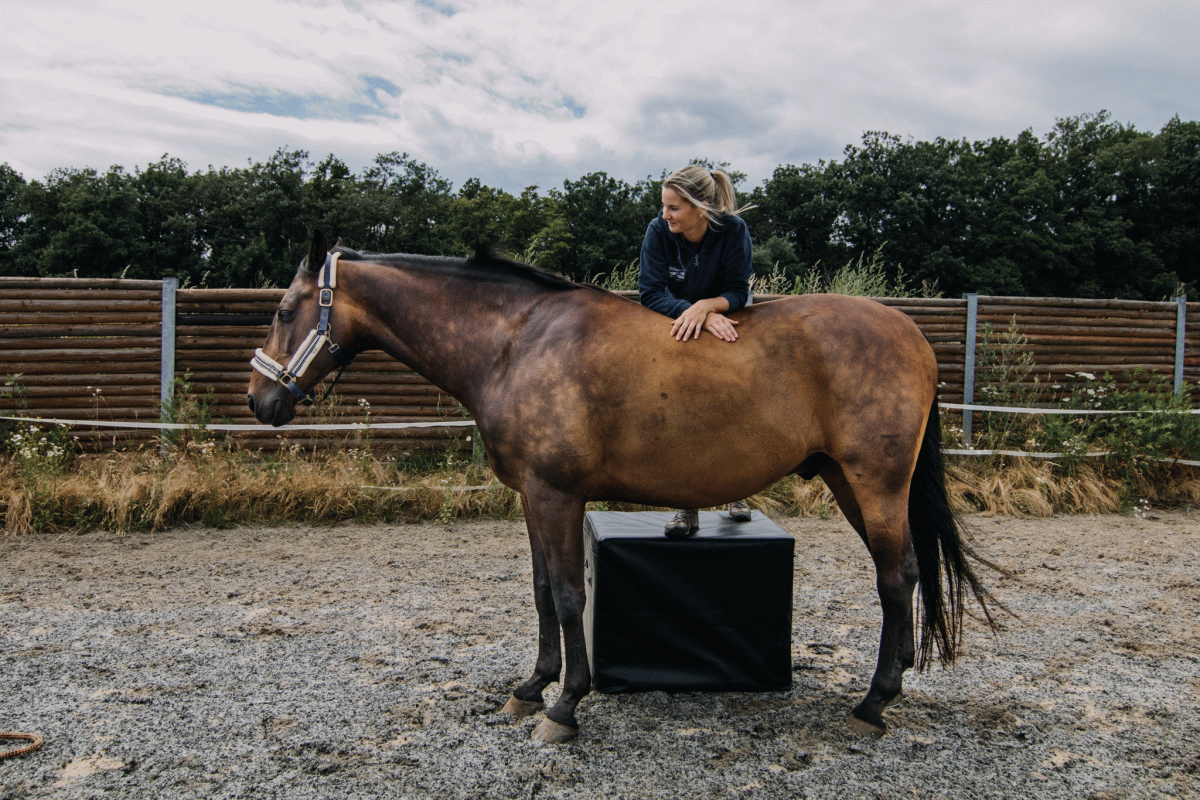
MVDr. Veronika Dolníčková is a veterinarian focusing on movement, back, and spine issues that she studied at the International Academy of Veterinary Chiropractic in Germany. Today, this expert tells us about the most common problems of her horse patients and how to avoid them.
Veronika, who are your typical patients?
Approximately 80% of my patients are horses, and 20% are dogs. Dogs are a different chapter, but my primary patients are horses. 70% of them are horses with real issues. 30% are horses without any real problems, but their riders are knowledgeable and want to give their horses preventive care. These are mainly competition horses to make sure they are all right and feel good to perform at their best. The remaining 70% are horses with problems, and their owners have noticed something wrong with them. I think this ratio mirrors the structure of our society quite well. Many people don’t care about prevention and start to solve problems only when they arise. I specialize in back, so it is obvious I encounter many horses with issues. Nonetheless, back care should still be preventive as you can help your horse much more before the issue even evolves.
Do you treat more issues in sport horses or hobby horses?
Definitely more in hobby horses. Hobby horses are ridden by layman riders who usually don’t know how a horse should move. It’s not that simple – some people might be lucky and buy a horse of a great body frame. Such a horse can take care of themselves even if their rider isn’t good. However, nowadays, some horses don’t have the good body frame we would wish for, and then they are predisposed for numerous movement issues. Laymen are not able to ride these horses without unknowingly hurting them.
Sport horses are not without issues, not at all. But if a horse is kept fit with well-developed muscles, the muscles become an undeniable help. Muscles present 80% of joint stability, and good fitness alongside well-developed muscles help very much. We can’t say that sport horses are without any problems, but there are fewer issues in sport horses than in hobby horses only hacking out. Their riders have a good intention not wanting to torture them at flatwork or jumping. It is a nice idea. However, a horse with a worse body frame needs flatwork to stretch the problematic areas as a kind of physiotherapy.
What are the most common problems you treat?
I mainly treat back pain and limping. These two issues are tightly connected, as horses with chronic limping usually use their back to compensate for the limping. So primarily, I treat horses with back pains.
Is it possible to prevent these problems, at least partly?
Yes, it is, but this is a broad topic. For starters, you need to keep certain welfare. A horse will not be happier being stuck in the stable for 23 hours a day rather than being in a paddock. By turning out your horse, you take a particular risk of tendon injury or other accidents. Nonetheless, if a horse with some issues is kept in the stable for most of the day, they don’t have the chance to relieve themselves from the issue, move freely, stretch their muscles, roll, and help themselves. Even world-class riders still turn out their horses. So if you want to keep your horse healthy, keep good welfare and turn them out. Then you also need a good riding technique and a suitable saddle.
What about poorly-fitted saddles?
Saddles are a whole new topic. It is not as simple as many people and saddlers think. For example, some horses forgive a minor mistake in a saddle. These horses have well-developed muscles, good body frame, are not hypermobile, and have good muscle tissue. But then there are horses who react to any differences, so they need a perfect saddle.
Saddle fitting is very complicated. In our country, saddlers measure a horse and then make a saddle. Unfortunately, it is not that simple. If you have a horse looking completely different in the stable than while moving under a saddle, the saddle is fitted for a completely different back shape. Nowadays, some companies measure back with special pads under a saddle. It is definitely a better method. If a rider is uneven, their unevenness, as well as their riding technique, affect the fitting. Even if a saddler measures a saddle for a standing horse the best way possible, it can be completely wrong when the horse starts moving.
These days, I’m not as strict as I used to be because it’s no use. I don’t think our saddlers are bad. They know how to fit a saddle for a universal horse, but there may be some issues with less-universal horses.
What would you recommend to our readers who wish to keep their horses healthy and happy?
Ride well, have a suitable saddle, and take good care of your horses. Love them, and get them checked by a specialist from time to time.